Features of the Japanese style
There are several basic design principles:
- This style is laconic, assumes restraint and a minimum amount of decor.
- The interior uses natural and natural materials such as wood, jute, bamboo or rice paper.
- The items are as functional as possible and are harmoniously combined with each other.
- Japanese-style kitchens are distinguished by the presence of free space, which is formed by dismantling the walls or using multi-level color transitions.
- Beige, black, brown, green or red shades are used in the decoration.
The photo shows a minimalistic Japanese-style kitchen design with natural wood trim.
Color scheme
The Japanese style assumes a natural palette of browns, beige, greens, grays, blacks and cherry tones. The design is often diluted with amber, honey splashes or blue and blue tones, representing the element of water.
The white range is considered not entirely acceptable for the oriental interior, so milk or cream colors are chosen instead.
For the design of the kitchen, only three colors are mainly used, preferably from the light spectrum.
The photo shows the interior of a spacious Japanese-style kitchen, designed in natural brown tones.
Black shades in Japan characterize nobility and wisdom. Dark tones can add expressiveness and elegance to any color. Since, in this style, contrasting black is not used in decoration, it can be found in the execution of the facades of a kitchen set or used for drawing hieroglyphs.
Sometimes for the design of Japanese cuisine, they choose not bright, exclusively dark or muted red and green colors.
The photo shows red and orange accents in the interior of a white and brown Japanese-style kitchen.
Which finish is right for you?
The original and aesthetic Japanese style combines notes of minimalism, natural motives and distinctive elements.
- Ceiling. The simplest solution is to paint or whitewash the ceiling surface. In order to make the environment as close as possible to the original Japanese style, the ceiling is divided into squares using wooden beams. The inner part is painted or decorated with a stretch canvas with a matte or fabric texture.
- Walls. The plane of the walls is finished with plaster or pasted over with plain wallpaper in neutral tones. To create an accent surface, it is appropriate to use photo wallpapers with thematic images, wooden or plastic, which can imitate bamboo.
- Floor. Traditional cladding is wooden planks. Such floor material is more relevant for the interior of the kitchen in a private house; in an apartment it will perfectly be replaced by linoleum, laminate or parquet.Finish in the form of porcelain stoneware with imitation of stone or wood structure will perfectly complement the surrounding design.
- Apron. Particularly noteworthy in the kitchen is the apron zone, which can be the main decorative element of the room. The apron is often laid out using mosaics, tiles with ethnic ornaments and artificial stone, or used for decoration with a photo print of hieroglyphs or sakura branches.
In the photo there is a Japanese-style kitchen with an apron area decorated with a sakura image.
In a small kitchen in Khrushchev, you can visually expand the space through the use of mirrors, as well as with the help of excellent daylight and diffused evening lighting.
For the kitchen-living room, the use of Japanese screens will be appropriate as a zoning element. Such designs, due to their mobility, provide the ability to change the configuration of the room at any time. An excellent option would be rice paper partitions that do not interfere with the penetration of light.
The photo shows a natural wooden parquet on the floor in the interior of an island kitchen in a Japanese style.
Selection of furniture and appliances
The Japanese style does not accept massive furnishings. The kitchen set is made of natural wood or other natural material and has a strict outline and at the same time a very elegant look. Due to this, the room is filled with air and light.
Refrigerators and other household appliances are built into the headset and hide behind the facades. The dining group is mainly equipped with a table with a stone or wooden tabletop and simple, non-bulky stools or chairs are installed.
In the photo there is a Japanese-style kitchen with a laconic set made of wood.
Lightweight and narrow designs with small handles are selected as cabinets. The facades are decorated with frosted glass inserts and lattice.
The working area in the kitchen is located as close to the walls as possible. It takes up little space in the room and at the same time does not differ in tightness and discomfort.
In the photo there is a furniture set in dark brown and red tones in the design of Japanese cuisine.
Lighting and decor
For Japanese interiors, devices that will gently diffuse light are appropriate. For example, interior ceiling lighting is a great solution. In addition, the kitchen can be equipped with a central chandelier and spots located around the perimeter.
Lamps with woven bamboo, straw shades or rice paper lampshades have a really beautiful look.
Since, in the Japanese style, the presence of regular geometric shapes is encouraged, light sources are distinguished by square, rectangular or spherical outlines.
In the photo there are pendant ceiling lamps and spot lighting in the interior of the Japanese-style kitchen-living room.
The decor allows the kitchen to have a more expressive theme. For this, accessories are used in the form of wall scrolls, vases, ceramic or porcelain figurines that can be placed in niches. Authentic tableware will become a wonderful decoration. The table can be supplemented with a tea set, a sushi set or a dish with fruits and sweets. Also, the working or dining area will be favorably emphasized by a tatami mat.
Plants traditional for Japanese culture, such as ikebana or bonsai tree, will harmoniously fit into the interior.
In the photo there is a dining area in a Japanese-style kitchen, decorated with a large geometric chandelier.
What curtains to use?
To complete the image of a Japanese-style kitchen, competent window decoration is required. Curtains are an almost indispensable part of the oriental interior. Light textiles and natural materials such as bamboo, rattan or rice paper are used in the production of curtains.
In the photo there is a Japanese-style kitchen with a window and a balcony door, decorated with bamboo roller blinds.
Basically, they choose Japanese panels, blinds or roller blinds up to the window sill for decoration.
To further emphasize the style of the kitchen, silk curtains are suitable, harmoniously combined with the furniture upholstery in the room.
The photo shows translucent two-tone Roman curtains on the window in the interior of the Japanese-style kitchen.
Japanese kitchen design ideas
The traditional design move is the installation of a low table, lined with pillows that replace chairs. This design not only has an unusual look, but also significantly saves space in the kitchen.
Shoji sliding structures can be installed instead of swing doors. They are decorated with translucent paper or frosted glass, which, in combination with wooden beams, creates a sophisticated checkered pattern.
Pictured is a Japanese kitchen design with a low wooden table lined with pillows.
Contemporary kitchen designs feature intricate décor in the form of artfully crafted samurai blades that shine with a perfectly polished surface. Stylized Japanese kitchen knives serve an applied function and enrich the surrounding interior.
Pictured is a spacious Japanese-style kitchen with shoji glass sliding partitions.
Photo gallery
A Japanese-style kitchen with an interior thought out to the smallest detail allows you to endow the atmosphere with an oriental spirit, give the room a unique grace and create a harmonious atmosphere in which all family members will be pleased.

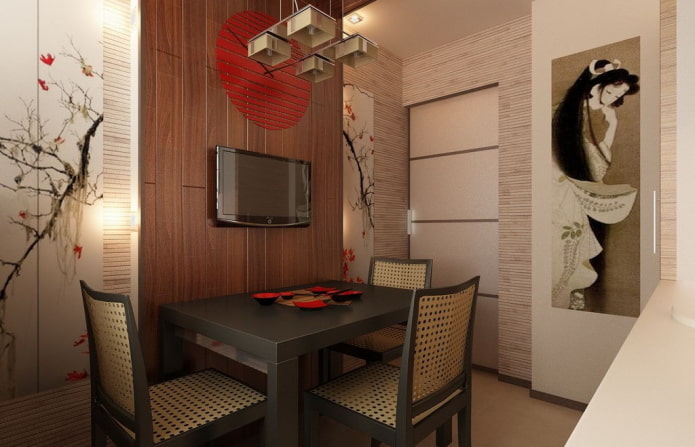
 10 practical tips for arranging a small kitchen in the country
10 practical tips for arranging a small kitchen in the country
 12 simple ideas for a small garden that will make it visually spacious
12 simple ideas for a small garden that will make it visually spacious
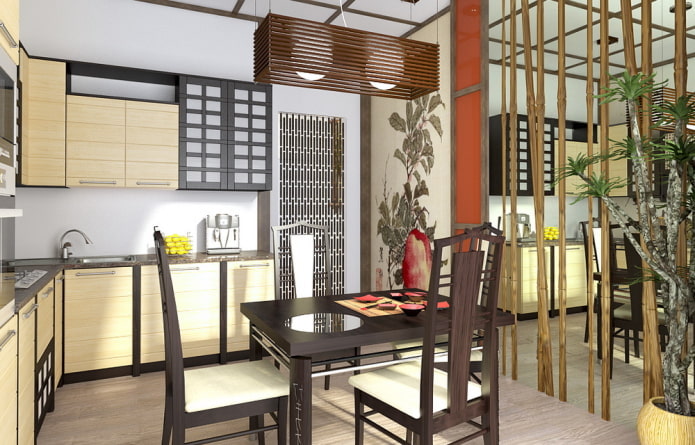
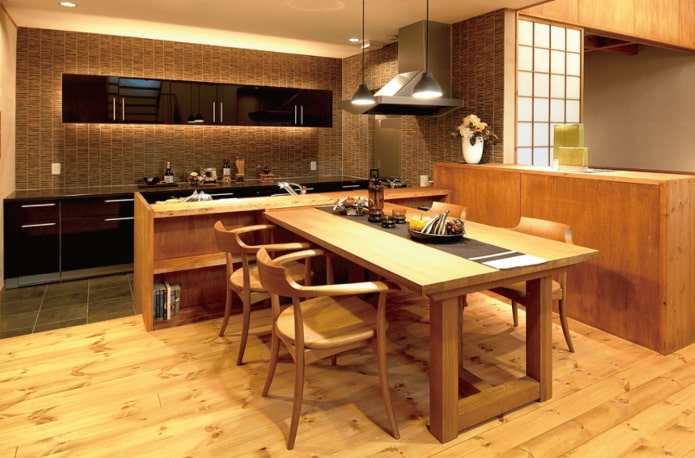
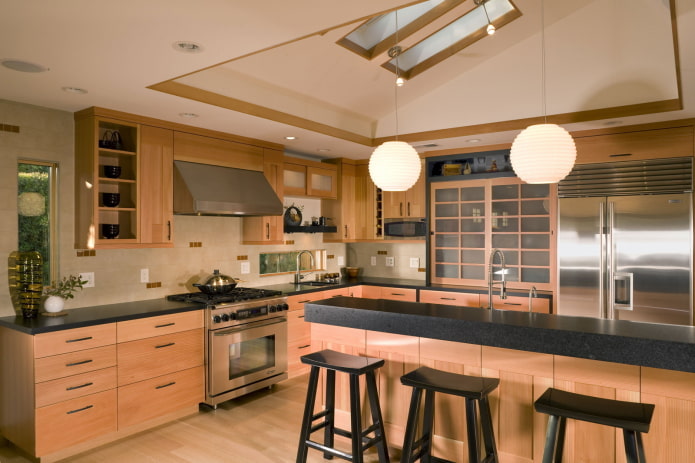

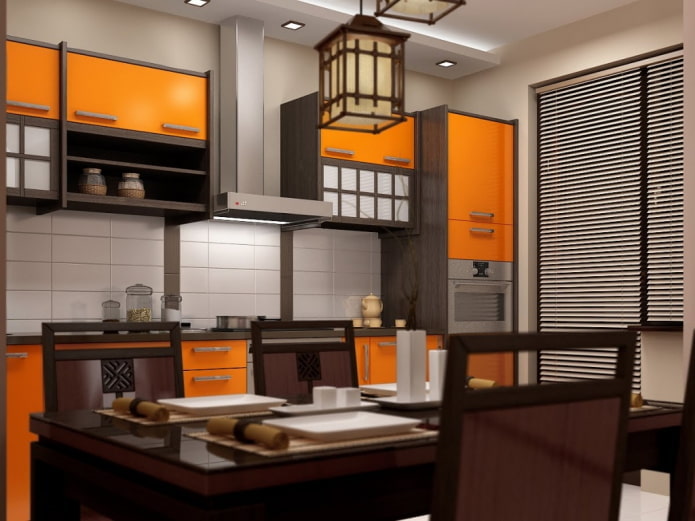
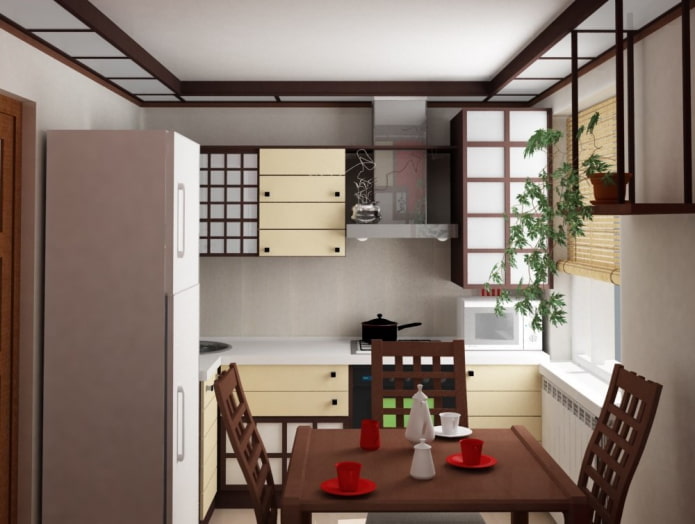

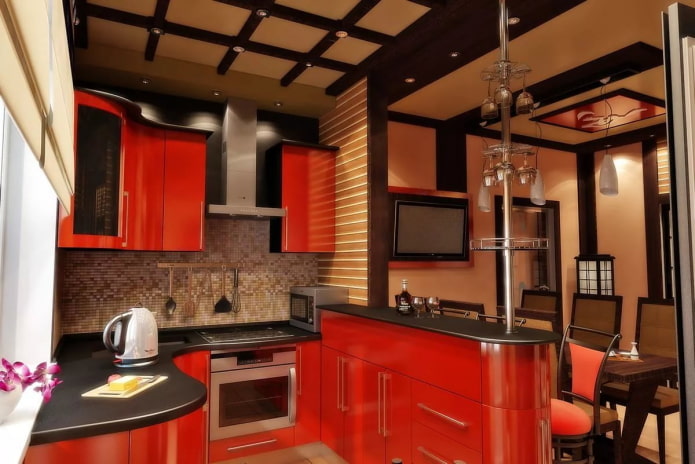
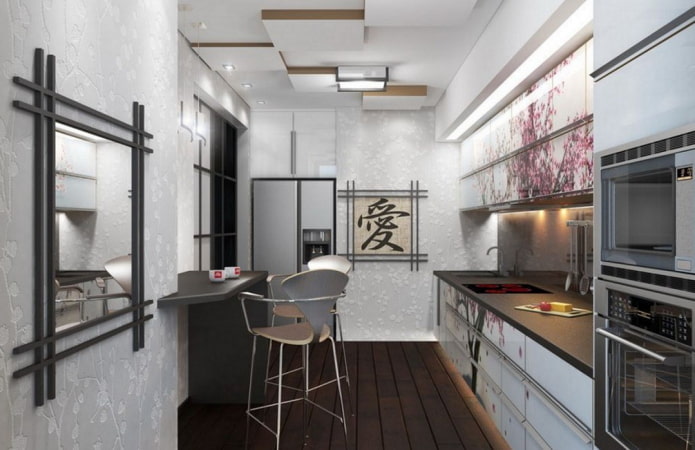
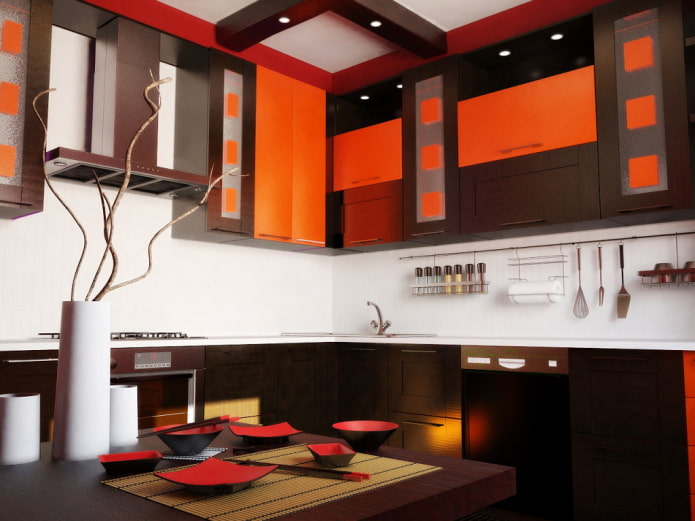
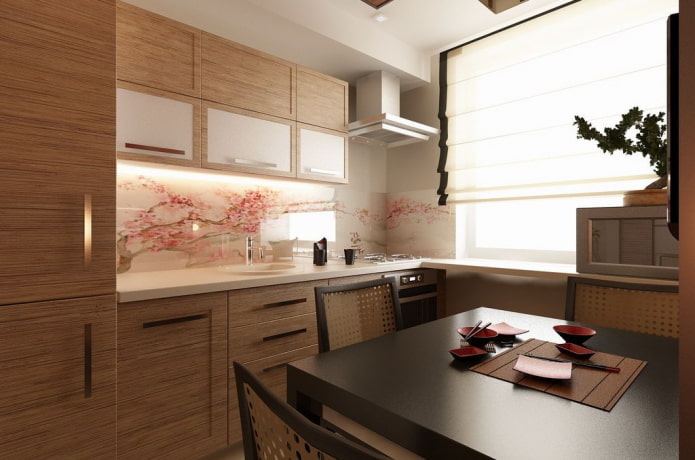
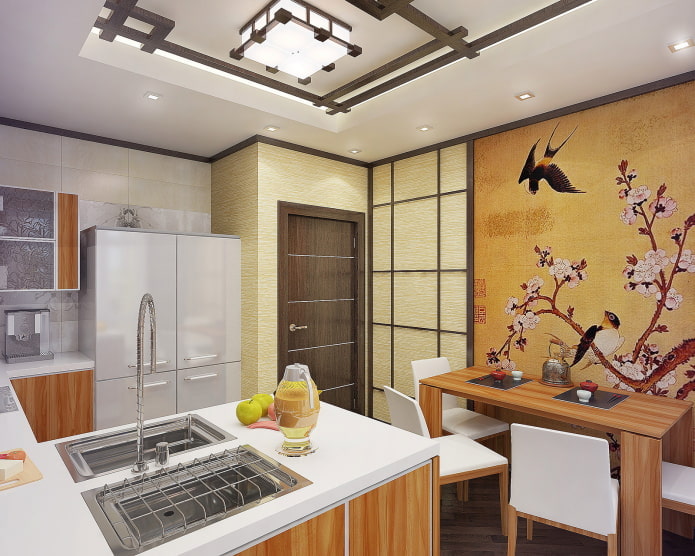
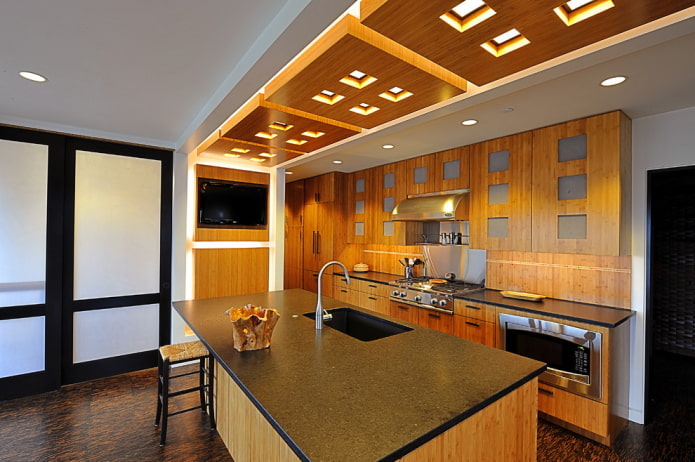
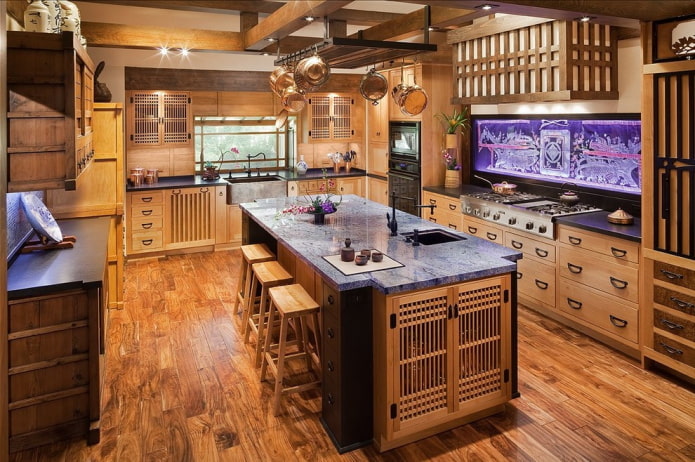

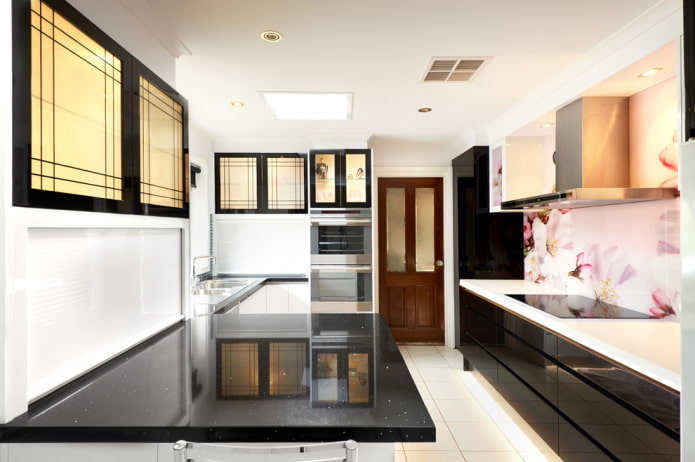
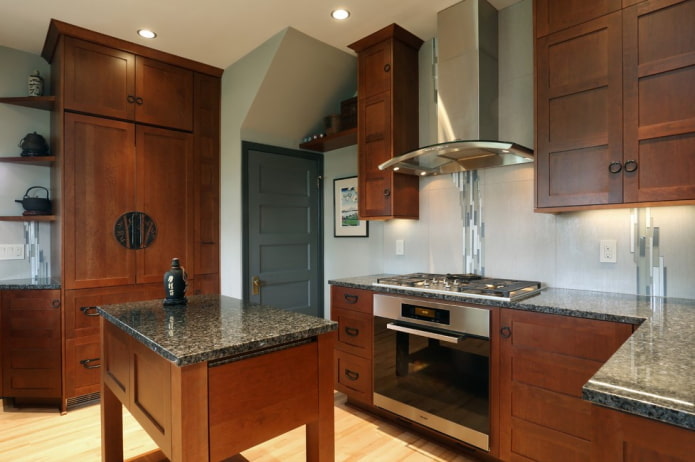
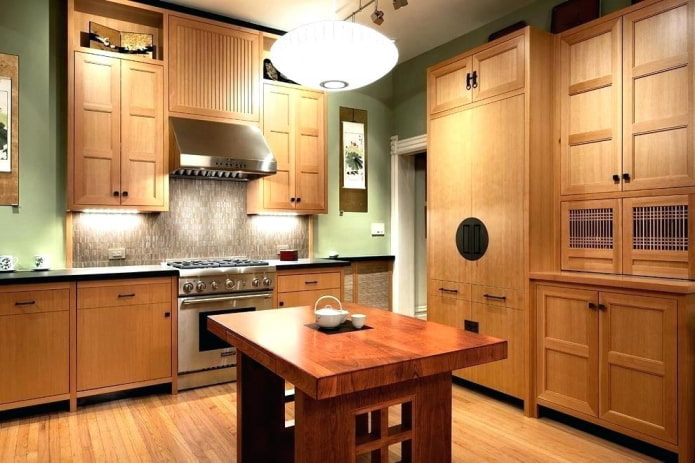
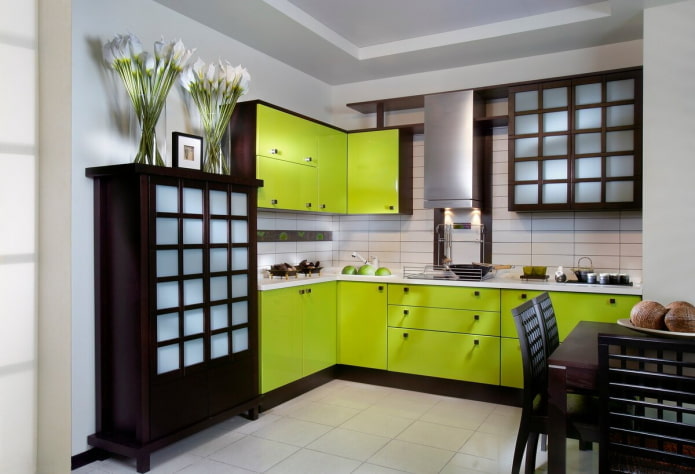
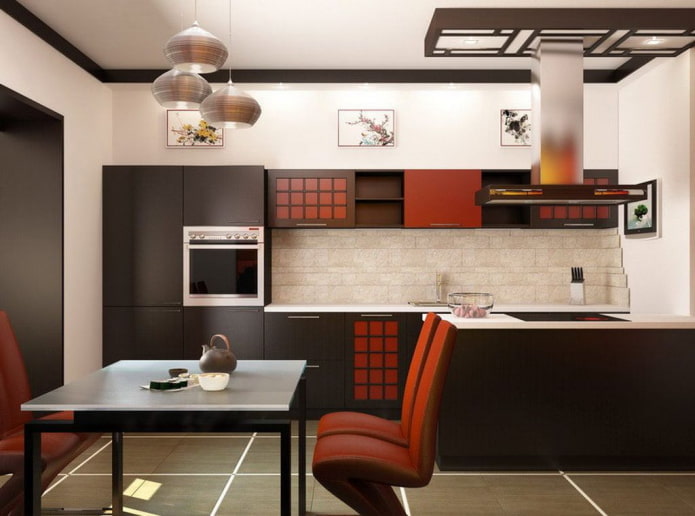
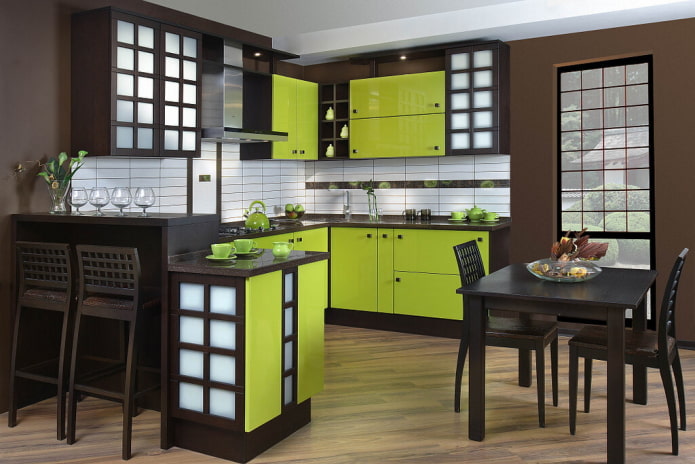
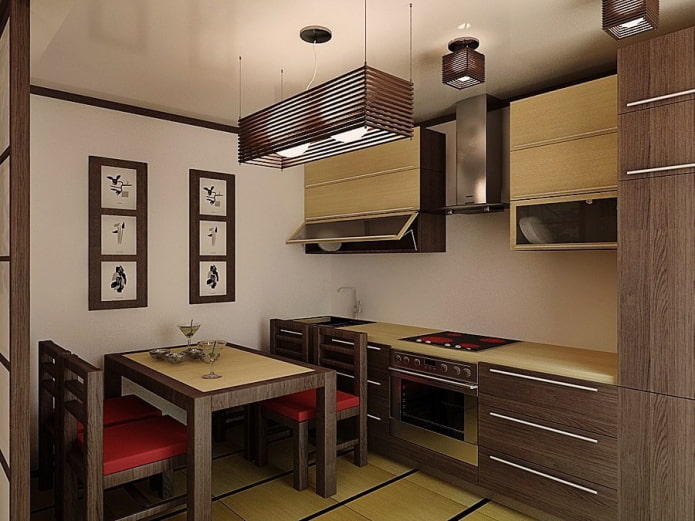
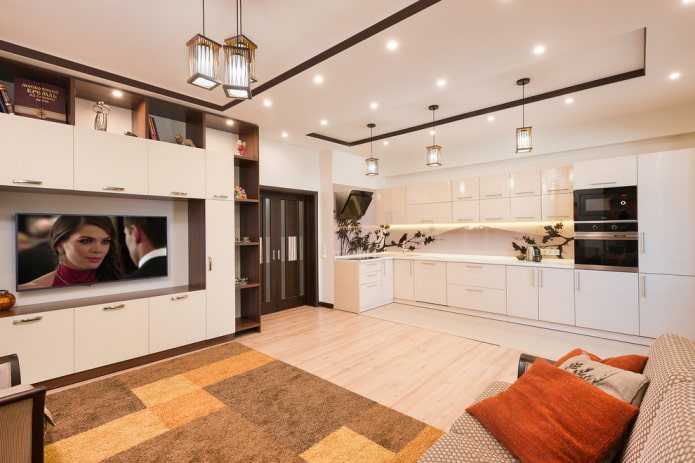
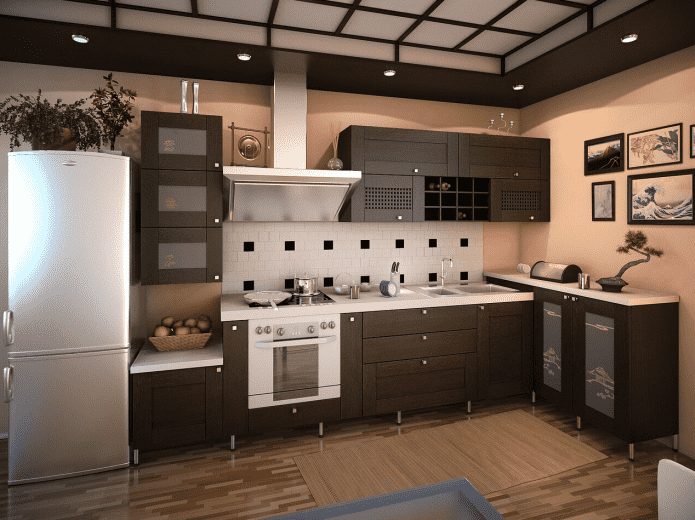
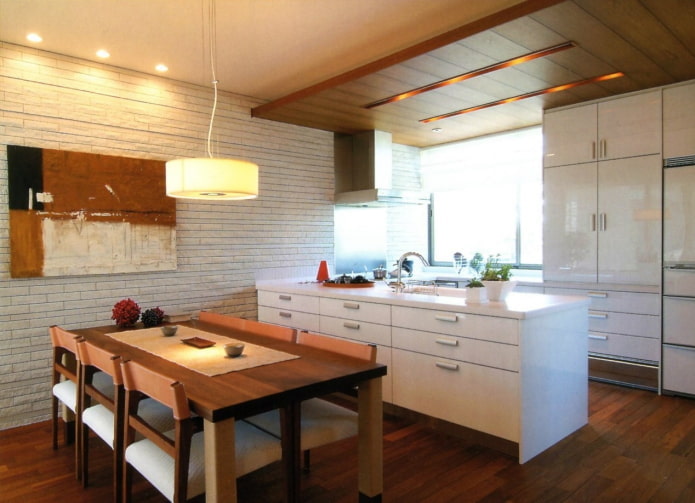

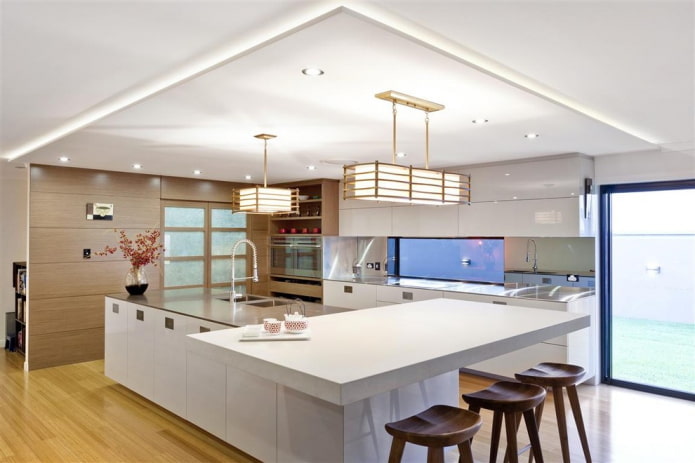
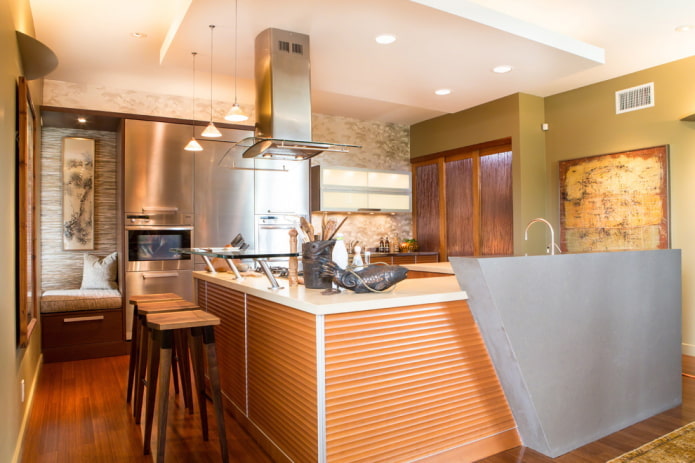
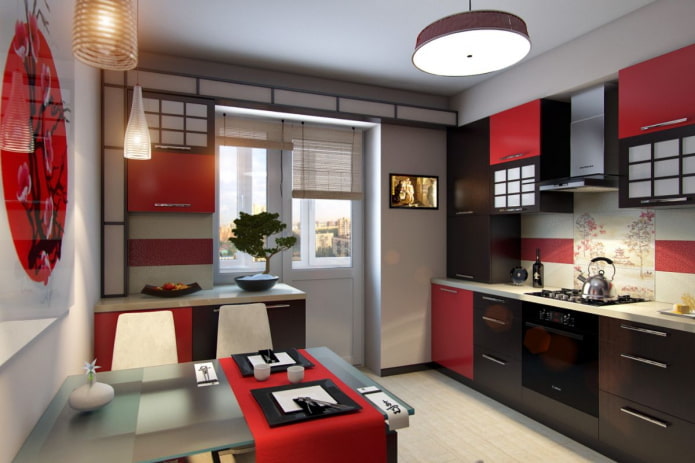

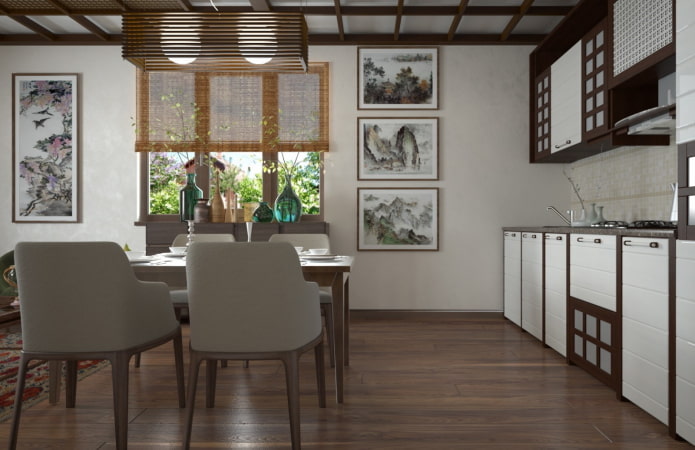
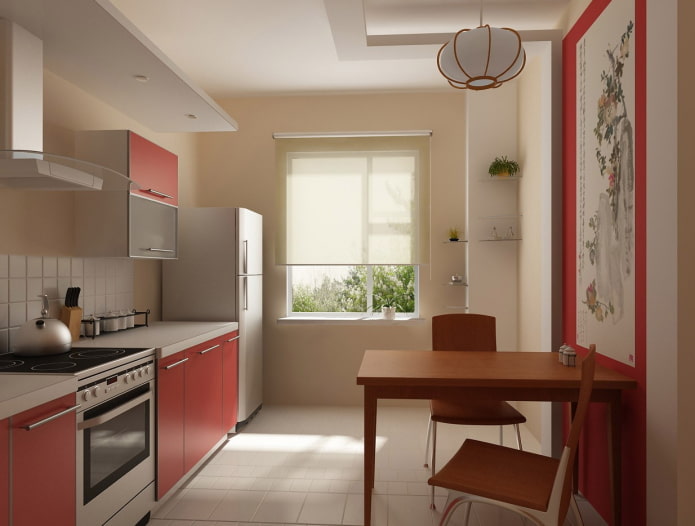
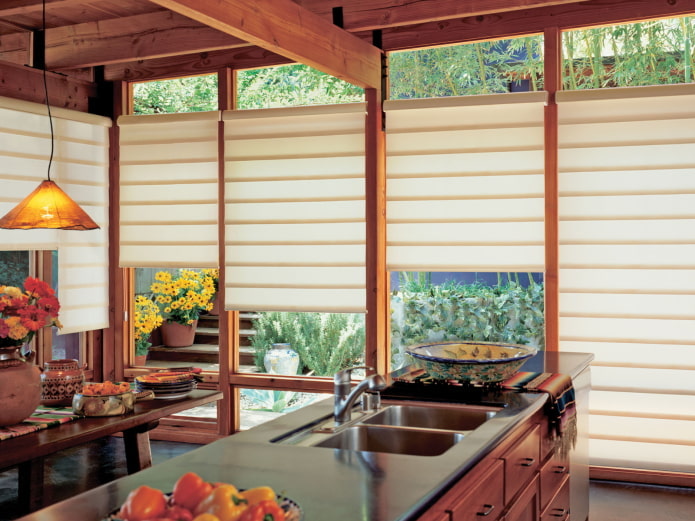
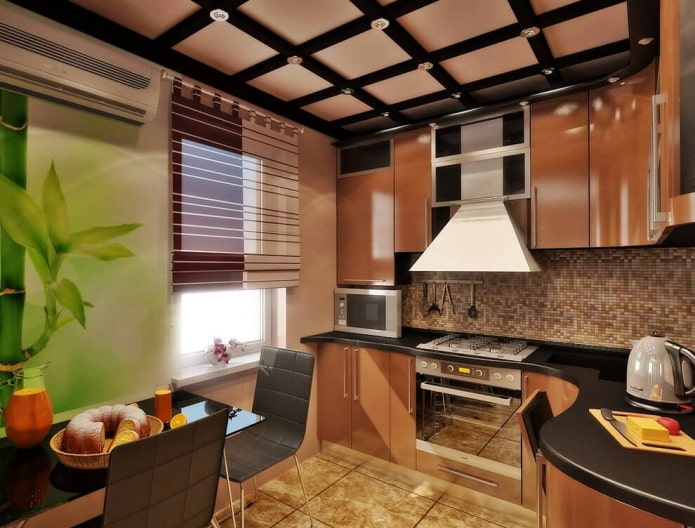
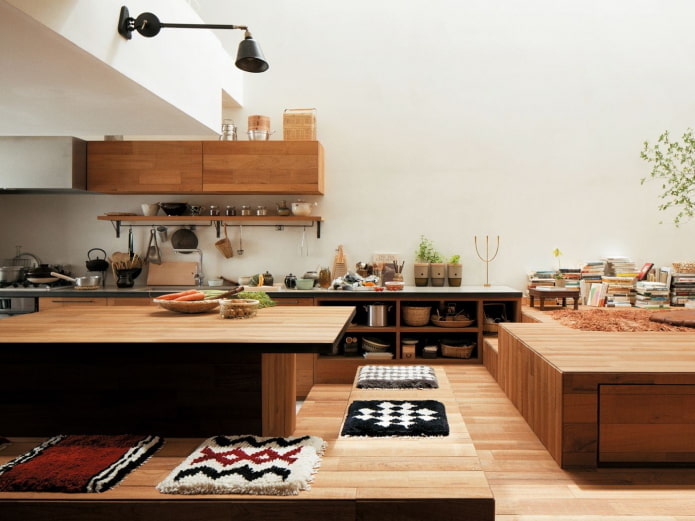
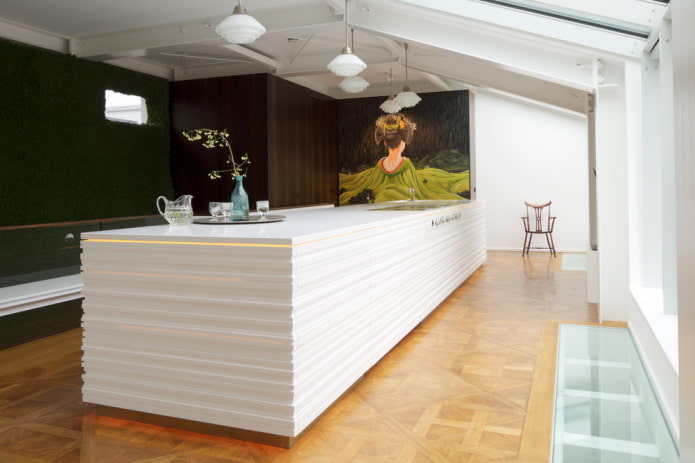
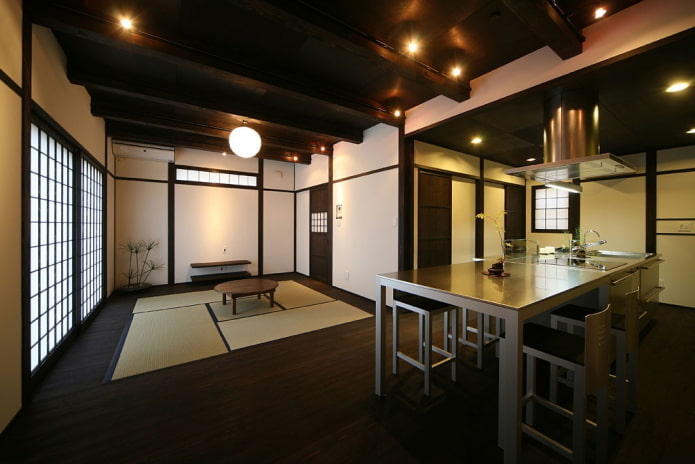


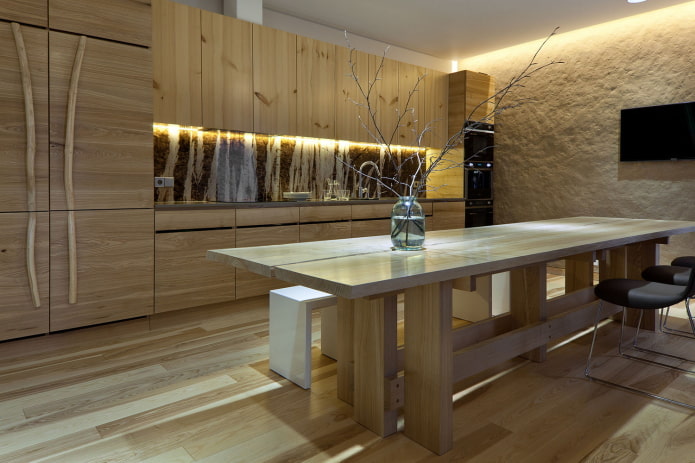
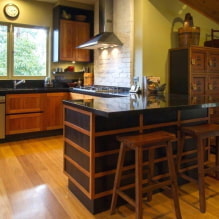
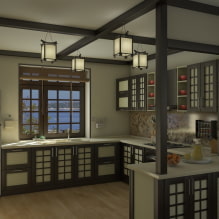
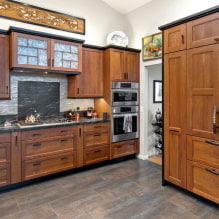
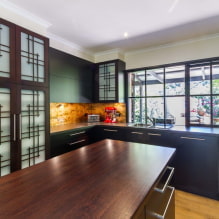
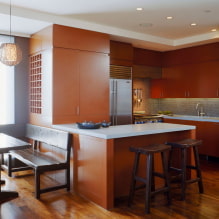


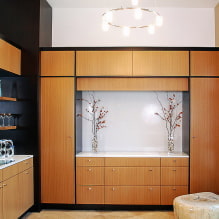
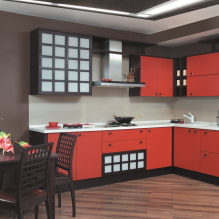
 How to choose the color of your kitchen sink?
How to choose the color of your kitchen sink? White kitchen set: features of choice, combination, 70 photos in the interior
White kitchen set: features of choice, combination, 70 photos in the interior Black set in the interior in the kitchen: design, choice of wallpaper, 90 photos
Black set in the interior in the kitchen: design, choice of wallpaper, 90 photos How to choose curtains for the kitchen and not regret it? - we understand all the nuances
How to choose curtains for the kitchen and not regret it? - we understand all the nuances Design of a white kitchen with a black countertop: 80 best ideas, photos in the interior
Design of a white kitchen with a black countertop: 80 best ideas, photos in the interior Kitchen design with green wallpaper: 55 modern photos in the interior
Kitchen design with green wallpaper: 55 modern photos in the interior